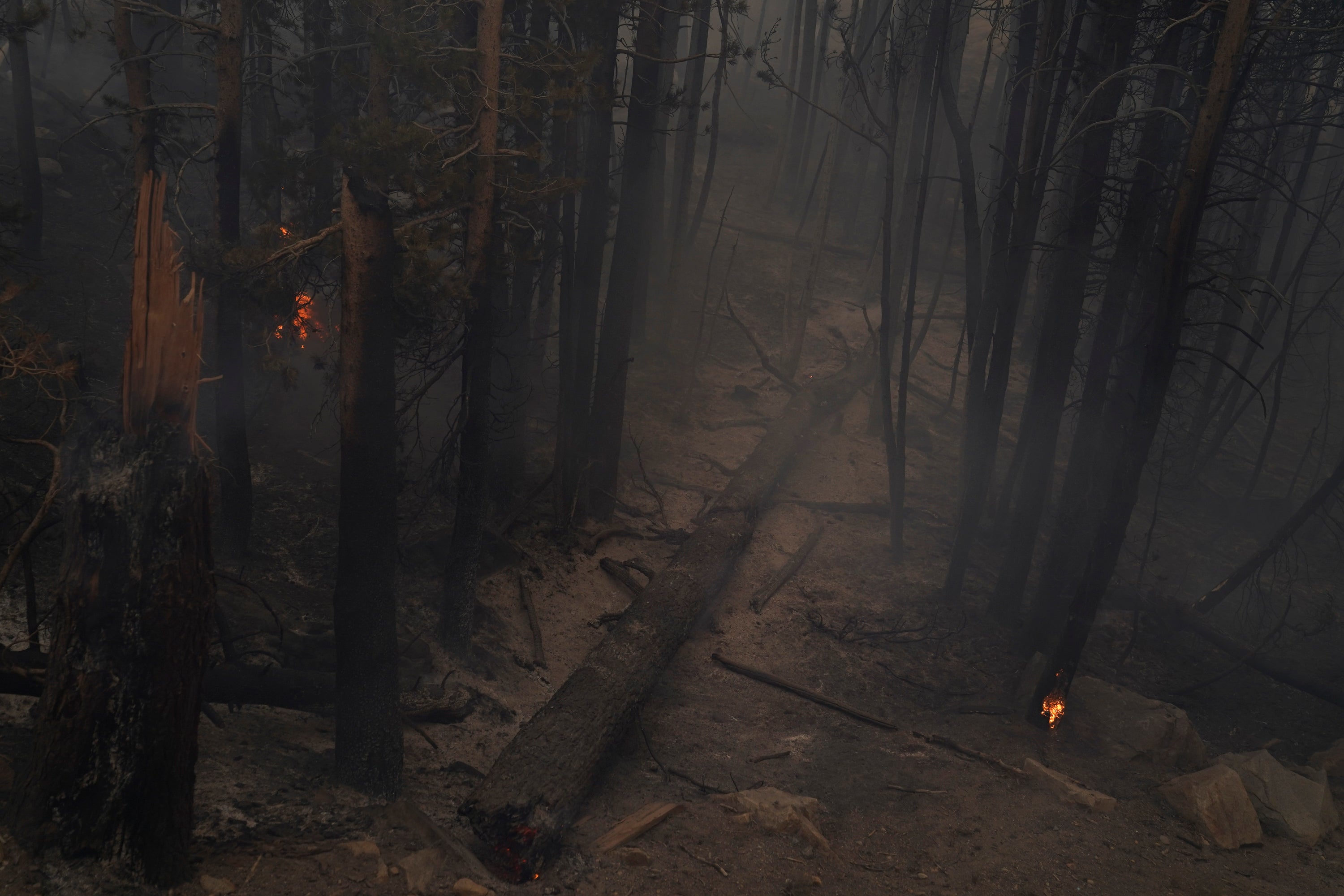Firefighter assigned to California blaze dies of illness
A firefighter has died of an illness while assigned to one of California’s largest wildfires

A firefighter has died of an illness while assigned to one of California s largest wildfires, authorities said Sunday, marking the first death in a season that has seen blazes destroy thousands of buildings and force entire towns to flee.
Edwin Zuniga with the California Department of Forestry and Fire Protection said he couldn't provide other details on the death.
The Dixie Fire began in mid-July in the northern Sierra Nevada and is the second-largest wildfire in recorded state history. It has burned nearly 1,400 square miles (3,625 square kilometers) in five counties and three national parks and forests, according to Cal Fire.
Three firefighters have been injured battling the blaze, which was 56% contained after destroying nearly 1,300 homes and other buildings.
The fire was being fought by 3,800 firefighters from various agencies. Calmer winds and higher humidity in the past two days helped crews trying to surround the fire, which at its peak raged through more than 100,000 acres of timber in a single day, fire officials said.
The blaze still was devouring 10,000 to 20,000 acres “which seems huge, except when you compare it to the size of the whole fire,” said Robert Jones, a fire information officer.
It was the first reported death among the more than 7,000 wildfires that have hit California this year in a season marked by drought and hot, dry weather that has turned timber, brush and grasslands into tinder throughout the U.S. West. California's fires have burned over 3,000 square miles (nearly 8,000 square kilometers).
Fire concerns have shut down all national forests in the state.
California has experienced increasingly larger and deadlier wildfires in recent years as climate change has made the West much warmer and drier over the past 30 years. Scientists have said weather will continue to be more extreme and wildfires more frequent, destructive and unpredictable.
South of the Dixie Fire, the Caldor Fire remained only a few miles from the popular resort of Lake Tahoe on the California-Nevada border. About 22,000 residents of South Lake Tahoe were ordered to evacuate last week.
Overnight, crews working on the eastern edge of the blaze were able to hold the fire within current containment lines and the immense blaze was now 43% contained, according to Cal Fire.
There was no immediate word on when residents might be allowed to return home but in a Sunday morning briefing, Tim Ernst, a fire operations section chief, said crews would continue to quench embers and mop up hot spots to make it safe to repopulate some communities around South Lake Tahoe “in the coming days."
Mandatory evacuation orders on the Nevada side of the state line were lifted Saturday, but some areas remained on a warning status. Douglas County authorities urged residents to stay alert, saying the fire still has the potential to threaten homes.
The fire has injured five firefighters and civilians and burned more than 700 homes, Cal Fire reported. Nearly 28,000 homes, businesses and other buildings remained threatened, ranging from cabins to ski resorts.
Bookmark popover
Removed from bookmarks